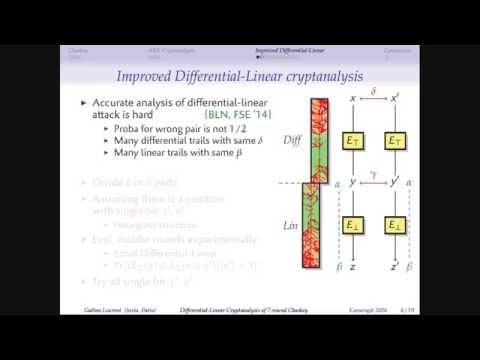Welcome to the resource topic for 2015/968
Title:
Improved Differential-Linear Cryptanalysis of 7-round Chaskey with Partitioning
Authors: Gaëtan Leurent
Abstract:In this work we study the security of Chaskey, a recent lightweight MAC designed by Mouha et al., currently being considered for standardisation by ISO/IEC and ITU-T. Chaskey uses an ARX structure very similar to SipHash. We present the first cryptanalysis of Chaskey in the single user setting, with a differential-linear attack against 6 and 7 rounds, hinting that the full version of Chaskey with 8 rounds has a rather small security margin. In response to these attacks, a 12-round version has been proposed by the designers. To improve the complexity of the differential-linear cryptanalysis, we refine a partitioning technique recently proposed by Biham and Carmeli to improve the linear cryptanalysis of addition operations. We also propose an analogue improvement of differential cryptanalysis of addition operations. Roughly speaking, these techniques reduce the data complexity of linear and differential attacks, at the cost of more processing time per data. It can be seen as the analogue for ARX ciphers of partial key guess and partial decryption for SBox-based ciphers. When applied to the differential-linear attack against Chaskey, this partitioning technique greatly reduces the data complexity, and this also results in a reduced time complexity. While a basic differential-linear attack on 7 round takes 2^78 data and time (respectively 2^35 for 6 rounds), the improved attack requires only 2^48 data and 2^67 time (respectively 2^25 data and 2^29 time for 6 rounds). We also show an application of the partitioning technique to FEAL-8X, and we hope that this technique will lead to a better understanding of the security of ARX designs.
ePrint: https://eprint.iacr.org/2015/968
Talk: https://www.youtube.com/watch?v=WczmCMZIBlM
See all topics related to this paper.
Feel free to post resources that are related to this paper below.
Example resources include: implementations, explanation materials, talks, slides, links to previous discussions on other websites.
For more information, see the rules for Resource Topics .
